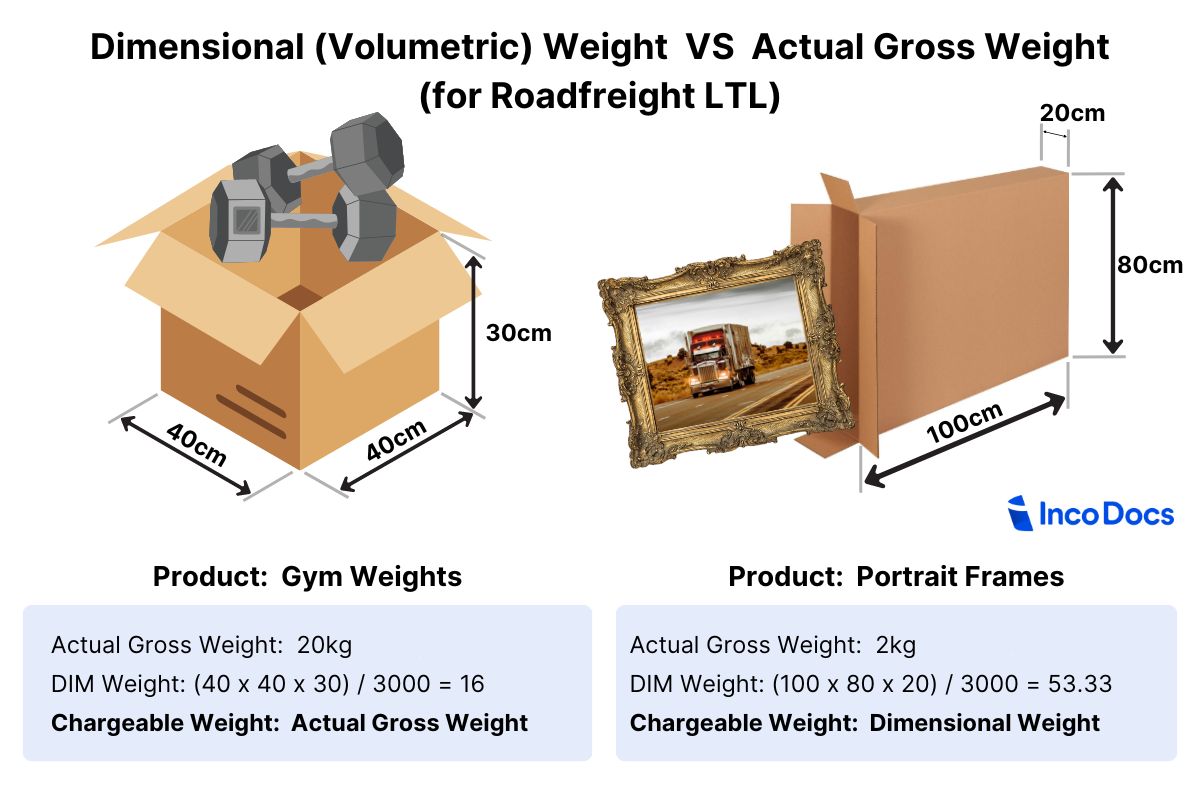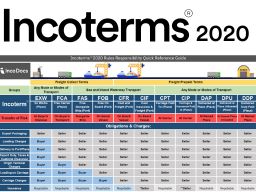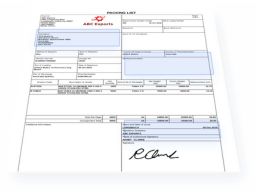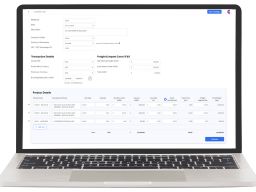CBM Calculator for Roadfreight LTL Shipments
How to Use the CBM Calculator for Roadfreight LTL Shipments
To use the CBM calculator for roadfreight LTL shipments, enter the details of each package, to instantly calculate the package CBM volume, total volume, and total weight of each shipment.
Use the CBM calculator by following these steps:
- Enter the length, width, height and weight of each package, and the number of packages. Click ’Add Package’ to add new package details as required.
The CBM calculator will give you the following calculations:
- Package Volume (CBM m3)
- Total Volume (CBM m3)
- Total weight (Kg)
- If you’d like to calculate the total chargeable amount for the shipment, enter the ‘Freight Rate Per Kg‘ that has been quoted to move this shipment.
At the bottom, the ‘Total Chargeable Amount’ to move this airfreight shipment will be shown.
What is CBM in shipping?
The CBM Calculator measures shipment volume in cubic meters, which is important in shipping and logistics. CBM stands for Cubic Meter (m3), which confirms the total space that your shipment occupies. In shipping, CBM (cubic meter) is a standard unit of measurement for freight volume. This is important for international trade.
The CBM Calculator helps by providing shippers with individual and overall packaging cubic volumes and weights. When shipping goods via FCL, this helps shippers to plan the loading of shipping containers. When shipping goods via LCL cargo, it helps shippers understand the freight costs.
Shipping companies or freight forwarders usually charge based on volume or weight, whichever is greater. Understanding CBM and weight data will help shippers in many ways, including:
- Understand the total freight costs that the shipment volume will incur
- Calculating the Landed Costs of imported products. Use the IncoDocs Landed Cost Calculator here.
- Plan purchasing quantities
- Plan the loading of shipping containers
CBM Calculation Explained
The formula for calculating CBM is quite simple. Multiply the Length x Width x Height of your package in meters. The result is the cubic meter volume (m3). See below formula and example for CBM calculations:
A pallet is 1.2m long, 1.2m wide, and 1.5m high
The formula is: Length (m) x Width (m) x Height (m) = CBM (m3)
The calculation is: 1.2m x 1.2m x 1.5m = 2.16 CBM (m3)
Dimensional Weight / Volumetric Weight Calculations
DIM Weight (also known as Dimensional Weight, or Volumetric Weight) is a key number used to calculate the chargeable weight for different modes of transport - via, Sea, Air, Courier/Parcel, Road or Rail transport. It calculates the amount of space that a shipment will take up when it is transported and compares it to the actual gross weight of a shipment.
Carriers, freight forwarders and courier companies will calculate the Dimensional Weight by multiplying the length x width x height of a package, and then divide it by a standard divisor (called the DIM Factor, which is 6000 for airfreight).
This ensures that even if packages are very large and lightweight, or very small and heavy, that they are charged accordingly by the carrier. For airfreight the DIM factor is 6000. It’s important to note that the DIM factor varies per mode of transport.
- Roadfreight: Length (cm) x Width (cm) x Height (cm) / 3000
- Seafreight: Length (m) x Width (m) x Height (m) x 1000. For seafreight shipments, carriers will multiply the length x width x height (in meters) and then multiply it by 1000.
- Airfreight: Length (cm) x Width (cm) x Height (cm) / 6000
- Courier/Parcel: Length (cm) x Width (cm) x Height (cm) / 5000
- Railfreight: Length (cm) x Width (cm) x Height (cm) / 3000

How to Calculate the Chargeable Freight for Roadfreight using DIM Factors.
For any particular shipment, the chargeable freight rate depends on the CBM volume and the Actual Weight or the DIM Weight (Dimensional Weight) of the shipment, whichever is greater.
It’s important to understand that Sea, Air or Road carriers will use the greater of the Actual Weight or the Dimensional Weight (also known as the volumetric weight, or cubed weight) to determine the chargeable cost to move the freight. For example, light but bulky items may cost more due to the large space that they occupy.
When calculating the chargeable weight, shipments via Sea, Air and Road will use a different DIM Factor (Dimensional Weight Factor, also known as the conversion factor/conversion rate). The different factors, conversion rates and formulas for the different modes of transport are as displayed in the table below.
| Mode of Transport | DIM Factor | Conversion Rate (kg per CBM) | 1 CBM to kg | Formula to Calculate Dimensional Weight |
|---|---|---|---|---|
| Seafreight | 1000 | 1000 | 1 CBM = 1000kg | Length (m) x Width (m) x Height (m) x 1000** |
| Airfreight | 6000 | 167 | 1 CBM = 167kg | Length (cm) x Width (cm) x Height (cm) / 6000 |
| Parcel / Courier | 5000 | 200 | 1 CBM = 200kg | Length (cm) x Width (cm) x Height (cm) / 5000 |
| Roadfreight LTL | 3000* | 333* | 1 CBM = 333kg | Length (cm) x Width (cm) x Height (cm) / 3000 |
| Railfreight | 3000* | 333* | 1 CBM = 333kg | Length (cm) x Width (cm) x Height (cm) / 3000 |
How to Calculate the Chargeable Freight for a Roadfreight LTL Shipment?
If you ship goods via road freight LTL, the carrier will charge for the freight per 1m3 or usually per 333Kg (a DIM factor of 3000 is used).
Note that for road freight LTL, a conversion rate 333 is widely used. However this can vary per carrier. Some carriers use 250, some 300, most use 333. Always verify with your carrier to ensure accurate calculations and compliance with their policies.
If a road freight LTL freight rate is quoted at $100USD per CBM/MT, let’s look at 2 examples below.
Shipping 1 pallet of goods. Pallet size: 120cm x 120cm x 150cm. Pallet weight: 550Kg.
- Dimensional Weight: 120 x 120 x 150 / 3000 = 720Kg (0.72MT)
- Gross Weight: 550Kg (0.55MT)
Since the dimensional weight is 0.72MT, which is greater than the gross weight of 0.55MT, the freight cost will be $100USD x 0.72MT = $72USD
Shipping 1 crate of goods. Crate size 180cm x 120cm x 120cm. Crate weight: 2900Kg.
- Dimensional Weight: 180 x 120 x 120 / 5000 = 518.4Kg (0.518MT)
- Gross Weight: 2900Kg (2.9MT)
Since the Gross Weight is 0.29MT, which is greater than the dimensional weight of 0.518MT, the freight cost will be $100USD x 2.9MT = $290USD
Frequently Asked Questions
What is a CMR Consignment Note for Roadfreight?
A CMR note is an International Consignment note that is the standard contract of carriage of goods document that is used when transporting goods Internationally via road. The CMR note can also be known as a CMR Waybill or International Consignment Note (ICN).
A CMR note is similar to a Bill of Lading, however the CMR note does not give it’s holder or carrier the rights of ownership of the goods. By documenting the responsibilities of both parties the CMR will help provide protection if the goods were to be damaged or lost whilst being transported.
The carriage company must have a CRM note to be able to commercially transport goods Internationally via road. The carriage company has the right to refuse to transport the goods if a complete CMR note document is not provided.
How do you calculate the CBM of an irregular shaped box?
Calculating the cubic meter of an irregular-shaped carton is a bit different, but maintains the same formula. First, find the maximum length, width and height of the carton. Treat it as if it fits into a regular cuboid. Measure the maximum length, maximum width and maximum height of the carton. Use these measurements as if they form a regular carton.
For an irregular shaped carton, the maximum length is 0.4m, the maximum width is 0.3m, and the maximum height is 0.3m.
- The formula is: Length (m) x Width (m) x Height (m) = CBM (m3)
- The calculation is: 0.4m x 0.3m x 0.3m = 0.036 CBM m3
CBM Calculation for Multiple Boxes or Cartons
Calculating CBM for multiple boxes or cartons is simple. First, calculate the CBM for one box/carton using the formula: Length (m) x Width (m) x Height (m) = CBM.
Once you have the CBM of one box/carton, multiply that by the number of boxes/cartons to get the total volume in CBM.
A shipment contains 12 cartons. Each carton dimension is 80cm x 40cm x 40cm.
- CBM per carton is 0.8 x 0.4 x 0.4 = 0.128m3
- CBM for 12 cartons = 0.128m3 x 12 = 1.536m3
How to Calculate CBM for Pallets
To calculate the CBM for pallets it is quite simple. Multiply the Length x Width x Height of your package in meters (be sure to include the pallet bast in your dimensions). The result is the cubic meter volume (m3) for pallets. See below formula and example for CBM calculations:
A pallet and it’s contents is 1.2m long, 1.2m wide, and 1.5m high
- The formula is: Length (m) x Width (m) x Height (m) = CBM (m3)
- CBM for pallet calculation is: 1.2m x 1.2m x 1.5m = 2.16 CBM (m3)
If you have multiple pallets, multiply the CBM of one pallet by the total number of pallets to get the total CBM: 2.16m3 x 4 pallets = 8.64m3
What is a Freight Class and how are they Classified?
Freight class is a standardized classification system used in the shipping and logistics industry to categorize and rate the cost of transporting various types of freight. This system is primarily used in Less Than Truckload (LTL) shipping in the United States and Canada, and it helps carriers and shippers determine shipping costs based on the nature and characteristics of the freight.
The National Motor Freight Classification (NMFC) is a system used to classify freight into different categories or classes, ranging from Class 50 to Class 500. It provides a common standard for carriers and shippers to use, ensuring consistency and fairness in shipping rates.
Freight Class Classification
Freight classes are numerical values assigned to different types of freight. The classes range from 50 to 500, with lower numbers indicating lower cost and higher numbers indicating higher cost. The classification is based on four primary factors: density, stowability, handling, and liability.
- Class 50: Very dense and easy-to-transport items like bricks or metal machinery parts.
- Class 100: Average freight such as canned goods or plastic containers.
- Class 200: Lightweight or bulky items like furniture or large appliances.
- Class 500: Extremely fragile, high-value, or hard-to-handle items like ping pong balls or high-end electronics.


